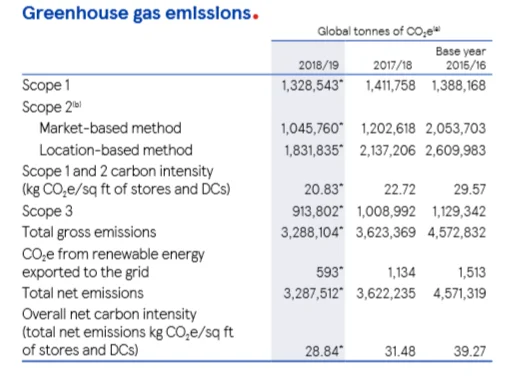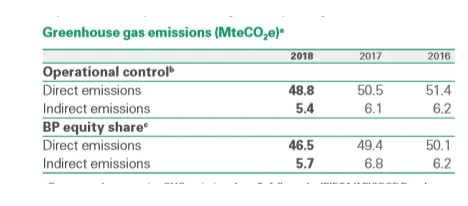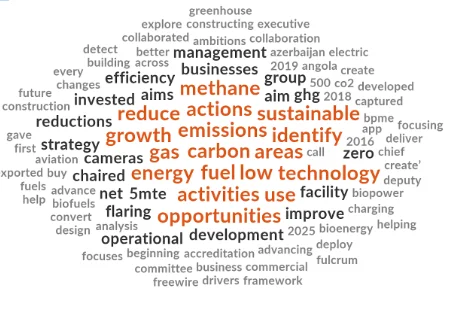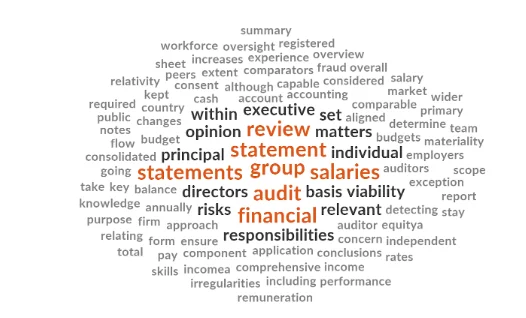Voluntary Disclosure in Business Reporting
Introduction
The contemporary business is operating under volatile conditions where the attention of stakeholders and the public predetermine the overall success of an enterprise. Voluntary disclosure, in this regard, is a way to inform the interested parties about the firm’s operations to cultivate trusting relationships. Indeed, according to Bourveau and Schoenfeld (2017, p. 1307), the information in the form of company disclosures "is the foundation on which traders from their beliefs about a company and ultimately their investment decisions." Thus, due to the evidence indicating the importance of voluntary disclosure for firms' proper operation, this study intends to answer the question: to what extent does BP and Tesco report its financial and corporate social responsibility? The answers to this question will allow for understanding what role voluntary disclosure plays in the contemporary business environment regardless of the sphere of firms’ operations. The current comparative analysis of qualitative data is based on the content analysis approach to interpreting the information available from the company’s annual reports. (165)

Research Methodology
Comparative research methodology is a research activity that entails the comparing of two or more phenomenon with an aim of making one or more discoveries of the phenomenon being compared (Logan, 2008). Comparative research can either take a qualitative or quantitative approach depending on the type of data and the researcher’s main aims. For instance, the researcher can use qualitative approaches when there is a need to understand the contextual meaning of data while quantitative approaches can be taken when the researcher intends to understand the relationship between variables (Wilson, 2013). Therefore, because the current study’s main aim was to evaluate the extent to which both BP and Tesco report its financial and corporate social responsibility, the researcher takes a qualitative research approach by analyzing the content of both companies’ annual reports. The comparative data analysis was done with the aid of NVIVO 12, which is a ‘powerful’ qualitative data analysis software that can be used to uncover in-depth insights of data for a rigorous production of evidence. The software was specifically useful in organizing, storing and analyzing data by enabling the researcher to import raw text data, use query and visualization tools to analyze the data, and achieve more in-depth results within a relatively shorter duration compared to manual analysis.
Environmental Impact Reporting
One of the most important and explicitly addressed issues that big corporations address in their business reports is the environmental impact of their operations. Since the problem of global warming attracts increased attention across the world, “stakeholders (states, general public, investors, and lobbyists) have put climate change on corporate agendas and expect firms to disclose relevant greenhouse gas information” (Depoers, Jeanjean and Jerome, 2016, p. 445; Giannarakis et al., 2018). When comparing the disclosure of such kind of information by Tesco and BP, a similar extent of addressing the issue was identified in both entities. Both companies align their corporate strategies according to the Taskforce for Climate-related Financial Disclosures (BP, 2018; Tesco, 2019). For instance, the NVIVO 12 analysis on both BP and Tesco’s annual report revealed 4 and 3 references of the Taskforce for Climate -Related Financial Disclosures (The Paris Agreement) in BP and Tesco respectively. For instance, out of the four references of the Paris Agreement, there were 3 specific references to the word ‘Paris’: (384)
Textual data is usually better understood within context. When we generated a word tree from the BP’s annual report, it was clear that BP conducted its environmental impact recording according to the Paris Agreement as depicted by certain phrases such as consistent with and with the goals of – all which surrounded the word ‘Paris’ (186)

Similar results were observed on the analysis of Tesco’s annual report. For instance, the word tree depicted the use of the word ‘Paris’ in one of the three codes referring to environmental impact reporting: 34

Therefore, it is safe to conclude that both BP and Tesco refer to the Paris Agreement for guidelines on reporting environmental impacts in their annual reports. Indeed, this is seen in the way both companies disclose their greenhouse gas emissions in a tabulated form as follows: 46


The comparison of the extent to which BP's and Tesco's data discloses the greenhouse gas emission scale shows that the area of performance influences the degree to which a company prioritizes environmental issues. Indeed, BP presents a more in-depth analysis of their efforts due to the overall high potential of harm in the gas and oil industry. On the other hand, Tesco provides a brief representation of information concerning emission rates. For instance, an NVIVO 12 analysis of PB’s annual reported revealed 18 references of strategies to improve environmental conservation compared to Tesco’s 3 references: (171)


When we run a word frequency query within the code “strategies to reduce environmental impact” in both Tesco’s and Bp’s annual report, a tree map emerged indicating words such as carbon, emotions, low and fuel on Tesco’s account and emissions, carbon, group and review. When these words were put into context, results revealed several words that hinted to strategies of sustainability, technological and innovative strategies, and carbon emission reduction strategies.

These references confirm that despite both companies adopting strategies to reduce environmental impact, BP provides a more in-depth analysis of its efforts while Tesco provides a brief analysis of its efforts. Nonetheless, as mentioned earlier, the level of efforts made by each company corresponds with the level of impact the respective company has on the environment. This explains why PB, an oil and gas company may have to put more efforts in conserving the environment that Tesco, which is just a retail chain company.
Financial data disclosure
BP provides a more in-depth analysis of the performance of its departments, interprets the goal achievement and effectiveness of their work and provides financial indicators beyond mandatory requirements. An in-depth NVIVO 12 analysis of both annual reports indicates a difference in financial reporting between BP and Tesco. Typically, BP had n more elaborate and detailed presentation of its financial reports compared to Tesco. For instance, a simple text analysis of both Tesco and BP’s annual reports reveals 5 references in the financial disclosure code for Tesco and 24 references in the financial disclosure code for BP. Even a word cloud query reveals that BP’s financial reporting is more detailed that Tesco’s financial report as illustrated below:

However, it is important to note that while Tesco is less descriptive in terms of interpretation of the performance particularities but rather provide an explicit financial analysis of the operations. It demonstrates more disclosure in terms of salaries and remuneration policies than BP does.
Conclusions
The conducted comparative research helped to understand how firms’ attitudes to the utilization of voluntary disclosure vary, although a similar purpose is served. Indeed, the identified similarities in the two documents indicate that Tesco and BP share the high level of awareness concerning the importance of environmental efforts for both the general public and stakeholders. However, the differences were found in the extent to which the firms disclose their performance in the environmental area. Since BP is engaged in a dangerous energy-related sphere, its climate change work disclosure is more in-depth as opposed to Tesco's.

Implications for practice
This study is an important knowledge resource because it helps to understand that the extent to which companies disclose their financial and corporate social responsibilities differs and varies depending on different factors including their public relations strategies. A possible implication of this finding is that policy and regulators should be keen to ensure that financial and corporate social responsibility reports are done according to the law regardless of the companies’ public relations strategies.
References
- Bourveau, T. and Schoenfeld, J., 2017. Shareholder Activism and Voluntary Disclosure. Review of Accounting Studies, 3(22), pp.1307-1339.
- Cano-Rodriguez, M., Marquez-Illescas, G. and Nunez-Níckel, M., 2017. Experts or Rivals: Mimicry and Voluntary Disclosure, Journal of Business Research, 73, pp. 46-54.
- Depoers, F., Jeanjean, T. and Jerome, T., 2016. Voluntary Disclosure of Greenhouse Gas Emissions: Contrasting the Carbon Disclosure Project and Corporate Reports. Journal of Business Ethics, 134(3), pp. 445-461.
- Giannarakis, G. et al., 2018. Determinants of Corporate Climate Change Disclosure for European Firms. Corporate Social Responsibility and Environmental Management, 25(3), pp. 281-294.
- Guay, W., Samuels, D. and Taylor, D., 2016. Guiding through the fog: Financial statement complexity and voluntary disclosure, Journal of Accounting and Economics, 62(2-3), pp. 234-269.
- Kukreja, G. and Gupta, S. 2016. Tesco Accounting Misstatements: Myopic Ideologies Overshadowing Larger Organisational Interests’, SDMIMD Journal of Management, 7(1), pp. 9-18.
- Logan, R. A., 2008. Research Methods in Information. Journal of The Medical Library Association, , 96(1), pp. 70-71.
- Wilson, V., 2013. Research Methods: Mixed Methods Research. Evidence Based Library and Information Practice, , 8(2), pp. 275-277.
- 24/7 Customer Support
- 100% Customer Satisfaction
- No Privacy Violation
- Quick Services
- Subject Experts



